|
Hawker Hurricane Mk.I
Early Fabric Wing
Version
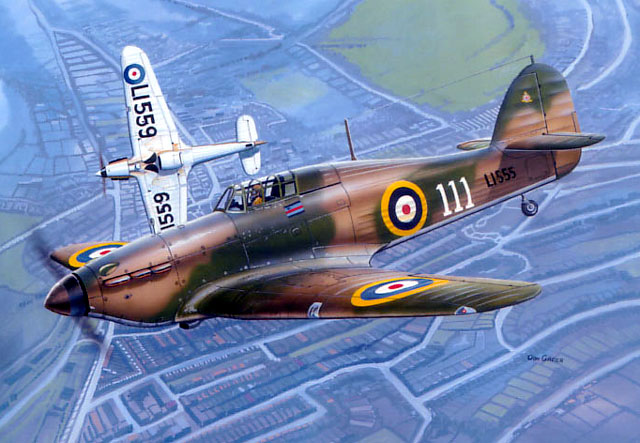
Classic Airframes
S
u m m a r y
|
| Catalogue Number: |
Kit No. 460 (RAF) and 461 (Foreign) |
| Scale: |
1/48 |
| Contents and Media: |
Low-pressure injection plastic - 64
grey styrene parts. 13 gray resin. Vac-formed clear parts for two
different canopies (two each) and landing lights. Instructions, decal
sheet and painting guide. |
| Price: |
USD$40.00 |
| Review Type: |
QuickLook |
| Advantages: |
Multiple options provided to do
three different production models. Well done fabric surfaces. Beautifully
presented decal artwork for numerous making options. Separate elevators
and rudder. |
| Disadvantages: |
Instructions could have been more
specific as to what optional parts went with which aircraft in the
markings guide. |
| Recommendation: |
Highly Recommended |
Reviewed by Steven "Modeldad" Eisenman

Classic Airframes' 1/48
Fabric Wing Hurricane Mk.I
is available online from Squadron.com
The Hawker Hurricane - Britain’s first modern monoplane combat
aircraft; Battle for France, Battle of Britain. One of my favorite
aircraft.
I’ve said enough already.
This is without a doubt the finest kit released by Classic Airframes.
This kit is about as close to a Hasegawa molding that a limited run kit
can get. It is my understanding that this kit was produced by a company
other than MPM, and the change clearly shows.
The first thing you notice is that the fuselage fabric is restrained and
looks nothing like Hasegawa’s corrugated Quonset hut of a fuselage. The
fabric ribbing on the wings, while distinct, is also restrained and well
represented.
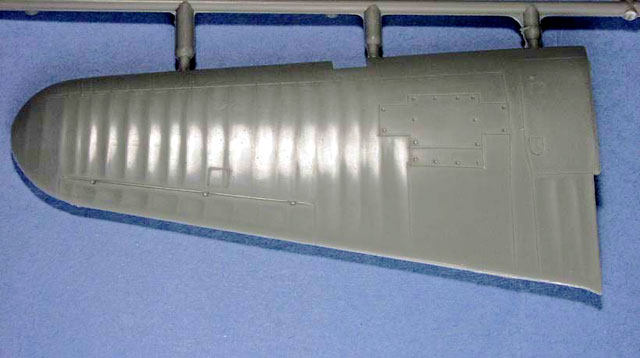
Unlike previous CA kits, the cockpit is in injection molded plastic with
only the seat in resin. The tubular cockpit framing is well represented.
Click the thumbnails below
to view larger images:
Now for the options.
-
Propeller – Watts two blade, De Havilland
three blade and Rotol three blade (this one is the bulbous blunt one and
this puts Hasegawa’s to shame).
-
Exhausts – a choice between the early kidney
(resin) or second production extended ejector stacks (injection plastic).
-
Fuselage – With or without the keel, and the
appropriate rudder.
-
Landing Lights – Molded on or resin
replacements with clear vac covers. Wing Guns – Molded on or resin
replacement inserts.
-
Separate elevators. Early style and later
style canopy (Although the armored windscreen is not represented.).
-
Venturi or pitot tube.

The wheel well is done quite nicely in resin, but you must remove a 1/4
inch thick molding block the size of the well. This can be done with a
wide blade razor saw or using a sanding disk chucked in a variable speed
drill - see my discussion of this at:
http://www.rollmodels.net/nreviews/airplanes/firefly/firefly.php
In looking at the exhaust, I would recommend that backing plates should
be fabricated to help secure them in the fuselage.
I realize that this is a first look, but I would like add some notes
and to clarify some of the option application that are not clear in the
painting guide so as to help you as you run headlong into putting together
a half-dozen or so of this great aircraft model. It appears that all the
aircraft, both RAF and Foreign had the early style canopy.
RAF
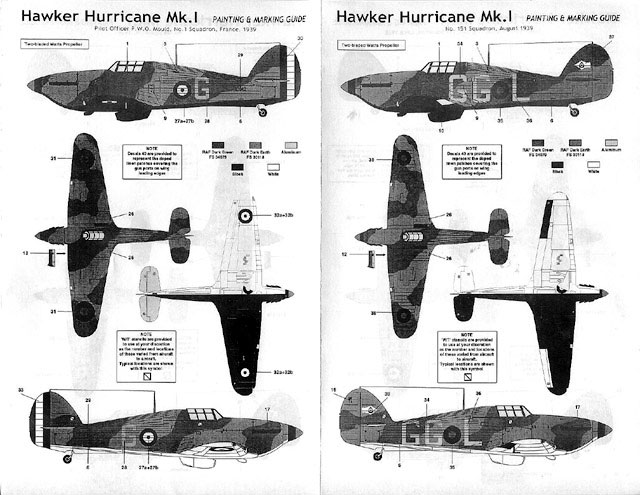
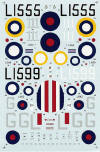 111Squadron
L1555 flown by John Gillan: Venturi and second production ejector stack.
Although every picture of a 111 Squadron aircraft in this serial range
shows kidney style exhausts, I have a picture of this aircraft after it
completed its record run. It seems this aircraft was fitted with the later
type exhaust. Also, the evidence seems to point to a black outline on the
111. 111Squadron
L1555 flown by John Gillan: Venturi and second production ejector stack.
Although every picture of a 111 Squadron aircraft in this serial range
shows kidney style exhausts, I have a picture of this aircraft after it
completed its record run. It seems this aircraft was fitted with the later
type exhaust. Also, the evidence seems to point to a black outline on the
111.
56 Squadron: Venturi and kidney exhausts.
1 Squadron and 151 Squadron: I believe both of these aircraft had second
series extended ejector stacks and a pitot tube.
Foreign
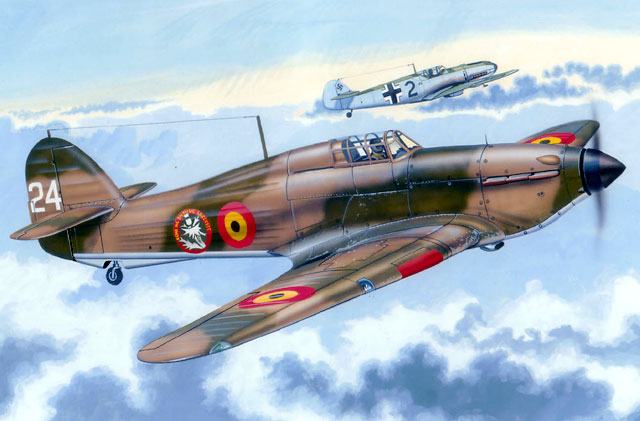
I believe all aircraft had the second series extended ejector stacks and a
pitot tube.
The Yugoslav and Italian aircraft are Zmaj produced. A British produced
Hurricane can be done using the Watts propeller and either the kidney or
extended stack and a pitot tube – check your references. Won’t that look
nice sitting next to a Bf 109 E also in Yugoslav markings!
Click the thumbnails below
to view larger images:
Of course with appropriate references and a good decal spares collection,
you can do Hurricanes for which CA did not have room on its decals sheets.
More RAF Hurricanes, a Turkish Hurricane or one of the Hurricanes destined
for Poland, but never delivered. A Hurricane with red and white Polish
checkerboards, that would look great!
I usually recommend Classic Airframes' models for moderately
experienced to experienced modelers. But, with this kit, it looks like
even a relatively inexperienced modeler could produce a great model of a
beautiful aircraft. With the beautiful decal artwork and the number of
options provided for, it will be hard to resist buying a good number of
both Hurricane kits.
It is only my opinion, but I truly believe that Classic Airframes has
outdone itself with this kit. A new standard has been set.
Review sample provided courtesy of Classic Airframes.
Classic Airframes
kits are available worldwide through hobby retailers and from
Squadron.com
Review and Images Copyright © 2003 by
Steven Eisenman
Page Created 08 April, 2003
Last updated 15 August, 2003
Back to HyperScale Main Page
Back to Reviews Page
|
Home | What's
New | Features
| Gallery |
Reviews | Reference
| Forum
| Search